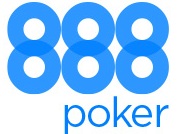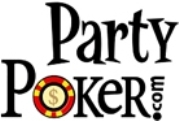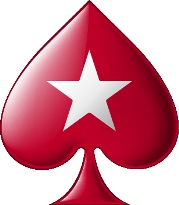So which hands should you play in seven-card Stud Poker? As opposed to breaking the analysis down by position as we did in Hold ’em, we’ll break it down by type of hand and discuss how position affects your choices during each discussion.
Playing Three-of-a-Kind on Third Street
If you’re dealt trips, you’re rolled up and have a tremendous poker starting hand. In fact, according to a 100,000-hand simulation in Turbo Seven-Card Stud, trip Deuces wins 72 percent of the time, trip Eights wins 79 percent of the time, and trip Aces wins 84.5 percent of the time against seven random hands when everyone stays to the river. Trips are so strong that you don’t have to worry if the fourth card of your rank is someone else’s upcard. The winning percentage for trip Deuces, Eights, and Aces drops only by about 2 percent when the fourth card of that rank is in another player’s hand. The bad news is that you won’t be rolled up that often. But when you are, raise until they make you stop.
Playing Pairs on Third Street
Pairs from Tens to Aces are great hands, but they’re a bit more vulnerable than trips, particularly when one or both of the other cards of your rank are dead, or you have a lousy kicker. For example, the hand in the figure below is pretty good if no one has an upcard larger than your pair, but it would be pretty dicey if there were a Queen and a King to follow you.



You can play unless you can’t improve to trips, or there are bigger cards behind you
You can play a pair of Aces in the hole regardless of your kicker and whether there are any Aces in other players’ hands. The reason Aces are so good is that if you make two pairs, and there’s a good chance you will, you will have Aces-up, very probably the best two-pair hand. Believe us, you will win a lot of hands with two pairs. In a 100,000-hand simulation in Turbo Seven-Card Stud, A♣, A♠, 2♦, 2♥, 3♣, 4♥, 6♣ won right at 50 percent of the time when every other player stayed to the river.
With that information in mind, you can usually play any pair of Tens or higher as long as you have a good kicker and no one with a larger upcard has raised you. If a player with a bigger upcard has raised, you can still call if you have a good kicker (preferably one that duplicates the raiser’s upcard) or re-raise if you have a larger pair than you fi gure them to have.
Pairs lower than Tens are still decent hands, provided your pair is live (there are no cards of that rank on other players’ boards), your kicker is higher than any callers’ door cards,
and no more than one of your kicker’s mates is gone. Be warned, though: When you play a small pair, you need to improve quickly or get out of the hand.
Playing Three to a Flush on Third Street
It’s easy to call when you have an Ace, King, and Queen as your first three cards, but calling with the hand in the figure below might give you pause if some of your opponents’ upcards are Tens or higher.



Sure, you could improve to a straight, but will you?
When you have three cards with no gaps, and all of the cards you need are live, the odds are about 6 to 1 against you making a straight, so you can certainly call the bring-in or even a full bet if your lowest card is an Eight or higher. If there is a one-card gap in your potential straight, however, you need to think very seriously about folding if any of your straight cards are dead. In fact, you should fold to a full bet if any of the cards you need to fill the gap are in another player’s hand.
You should also be careful of three-card straights that contain Aces, mainly because your outs are cut in half. For example, if you hold the hand in the figure below, you must catch a Jack and a Ten to complete your straight. This hand contains three big cards, which is great, but it has a relatively low straight potential.



Big cards are good, but you have an inflexible straight draw










